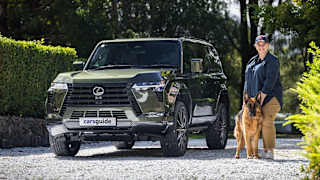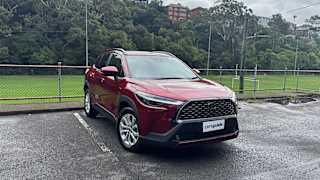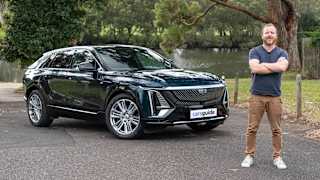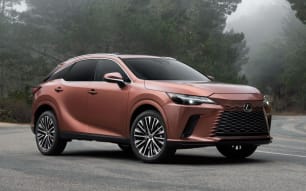It’s a low car to get in and out of, so I really like the comfort access function, where the seat slides back for easier access.
Once you’re in, you have plenty of head, leg and elbow room in both rows. Although, I did notice the sun visor felt very close to my head from my driving position. And if you sit closer to the wheel, you’ll be ducking your head to even pull it down.
The comfort factors up front cannot be downplayed – this has a sense of luxury from every angle. The seats are beautiful to sit in on a long trip and I especially like the massage function on the driver’s side. You also enjoy heat and ventilation functions plus a heated steering wheel.
Individual storage options are good up front with two cupholders, a drink bottle holder in each door, glove box and a middle console.
There is also a narrow utility tray that has the wireless phone charging pad, two USB-A ports and a 12-volt socket but I was hoping for the faster USB-C ports at this price point.
The rear seats are also well-cushioned but the space is narrower than at the front. The curved C-pillar makes you feel like you’re being tucked in and that makes it more like a four-seater than a five-seater for passenger comfort. This is further highlighted by the cockpit-like controls in the fold-down middle armrest.
These controls are a similar set up to the front multimedia system and are connected to two 9.2-inch touchscreens on the backs of the seats.
Annoyingly, back seaters can also access (and control) the front audio and climate controls. I didn’t find a way to disconnect this access and my six-year old was pleased as punch.
They also control the heat function on the outboard seats and the retractable rear window sun-blind. In the armrest’s middle console, you get a single USB-A port and two 'aux' inputs to hook up a couple of headphone sets.
I loved being able to entertain my son on our road trip but you can’t just hook up a phone and play Netflix or Disney. It has to be a video file on some sort of hard drive.
The multimedia system is simple enough and it uses a combination of touch and a rotary dial to operate.
The 12.0-inch coloured head-up display is clear and the 3D 12.3-inch digital instrument cluster is cool but it did take my eyes a bit to get used to it as it can look like a hologram at times.
Surprisingly, this car only features wired Apple CarPlay and Android Auto. The built-in satellite navigation is probably the fiddliest to use out of all of the systems because it flips between three functions – rotary dial, press-buttons and a touchpad but the option of ‘writing’ your address is cool.
The boot is an interesting one as it’s small for this class at 354L. To accommodate the electrics, the shape is stepped and it makes for an awkward space for bigger items like luggage.
I had plenty of room for my bits and groceries, though, and I enjoyed the powered tailgate with proximity opening feature.







